Overview
In the realm of digital marketing, many founders face the challenge of low user engagement and conversion rates. This issue can feel overwhelming, especially when you pour your heart into your product or service, only to see minimal response from your audience. It’s a common pain point that can lead to frustration and doubt about the effectiveness of your marketing strategies.
However, there is hope. The key lies in effective calls to action (CTAs). When thoughtfully designed and personalized, CTAs can significantly enhance user engagement and conversion outcomes. Imagine crafting a message that resonates deeply with your audience, compelling them to take action. Statistics reveal that clarity, urgency, and strategic placement are essential in driving user actions. By focusing on these elements, you can transform your engagement metrics into something truly remarkable.
Let’s explore how embracing well-crafted CTAs can nurture your connection with users and foster a supportive environment for growth. As you reflect on your journey, consider how personalized messaging can resonate with your audience's needs and aspirations. Together, we can create a community that thrives on understanding and support, ultimately leading to the success you envision for your startup.
Introduction
In the competitive realm of digital marketing, many brands face the challenge of effectively engaging users—a struggle that can significantly impact their success. As the landscape evolves, the pressure to craft compelling calls to action intensifies, leaving brands wondering how to drive conversions and foster meaningful connections.
This article explores ten strategic examples of calls to action that not only capture attention but also enhance user engagement. By sharing insights that can transform how brands interact with their audiences, we aim to support you in navigating this complex environment.
What truly sets apart a mediocre CTA from one that resonates deeply and compels users to take action? Let's embark on this journey together to uncover the key elements that can elevate your brand's engagement strategies.
RNO1: Transforming Engagement with Strategic Calls to Action
In today's fast-paced digital landscape, many brands struggle to create meaningful connections with their audience. This challenge can lead to disengagement and missed opportunities for conversion. RNO1 understands these pain points and excels in crafting strategic calls to action examples that resonate deeply with individuals, significantly driving both engagement and conversions. By seamlessly integrating calls to action examples into their branding and digital experiences, RNO1 ensures that each interaction is not just functional but also compelling, encouraging users to take the next step in their journey with the brand.
The impact of effective calls to action examples in digital marketing is profound, especially as we look towards 2025. Personalized prompts convert 202% better than standard ones, and incorporating urgency signals can enhance results by up to 332%. Engaging calls to action examples can even double success rates compared to typical alternatives. Successful brands leverage these insights; for instance, optimizing button size and color can boost results by 21%, and strategically positioned calls to action examples above the fold perform 304% better than those below. These statistics underscore the importance of thoughtful design in capturing attention quickly.
In the realm of eCommerce, the importance of calls to action examples is paramount. With mobile devices accounting for 68% of total e-commerce traffic, can improve success rates by 32.5%. Additionally, pages that showcase social proof see an average success rate of 12.5%, highlighting how testimonials can guide prospects toward engagement. RNO1's commitment to crafting influential calls to action examples not only enhances audience involvement but also solidifies their position as a leader in branding and digital design. They stand as an essential ally for brands striving to thrive in the digital era, offering the support and expertise needed to navigate these challenges with confidence.
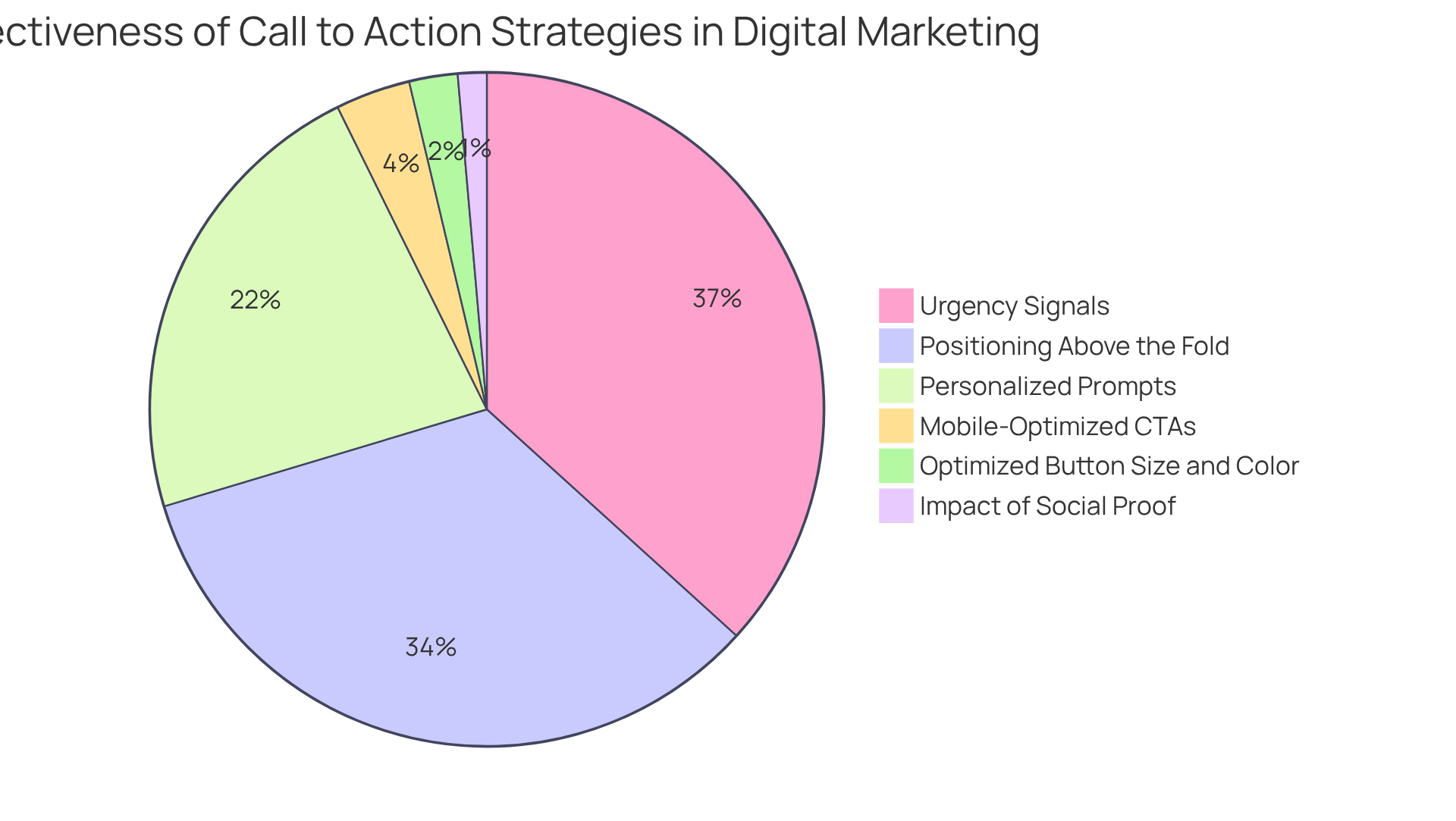
Button CTAs: Maximizing Click-Through Rates with Effective Design
Button CTAs often pose a challenge for many tech startup founders, as they are crucial components on a webpage that significantly impact engagement and success rates. When buttons blend into the background, they can lead to . The implications of this can be disheartening; after all, every click counts in the journey toward success. To address this, it’s essential to ensure that buttons are visually distinct, utilizing contrasting colors and clear, action-oriented language. Research shows that simply changing the color of a CTA button can increase conversions by up to 21%. This highlights the profound impact that color psychology can have in digital marketing, a detail that should not be overlooked.
Moreover, the dimensions of the buttons should be optimized for both desktop and mobile audiences. By enlarging the size of a CTA button, you can elevate click-through rates by an impressive 90%. Incorporating hover effects can further enhance the user experience by providing instant visual feedback, fostering engagement, and making individuals more likely to take action. Current trends in button design emphasize simplicity and clarity, which ensures that calls to action examples are easily noticeable and compelling.
A/B testing can also be a game changer, with potential results showing a 49% rise in engagement. This process allows companies to refine their calls to action examples based on real consumer behavior, creating a more personalized experience. By adhering to these best practices, you can design effective button CTAs that promote greater audience engagement and conversion rates. As Anmol Mehta wisely states, "Ultimately, a well-executed call to action can mean the difference between a successful campaign and a flop." Embracing these strategies not only empowers your approach but also nurtures the connection with your audience, guiding them toward meaningful interactions.
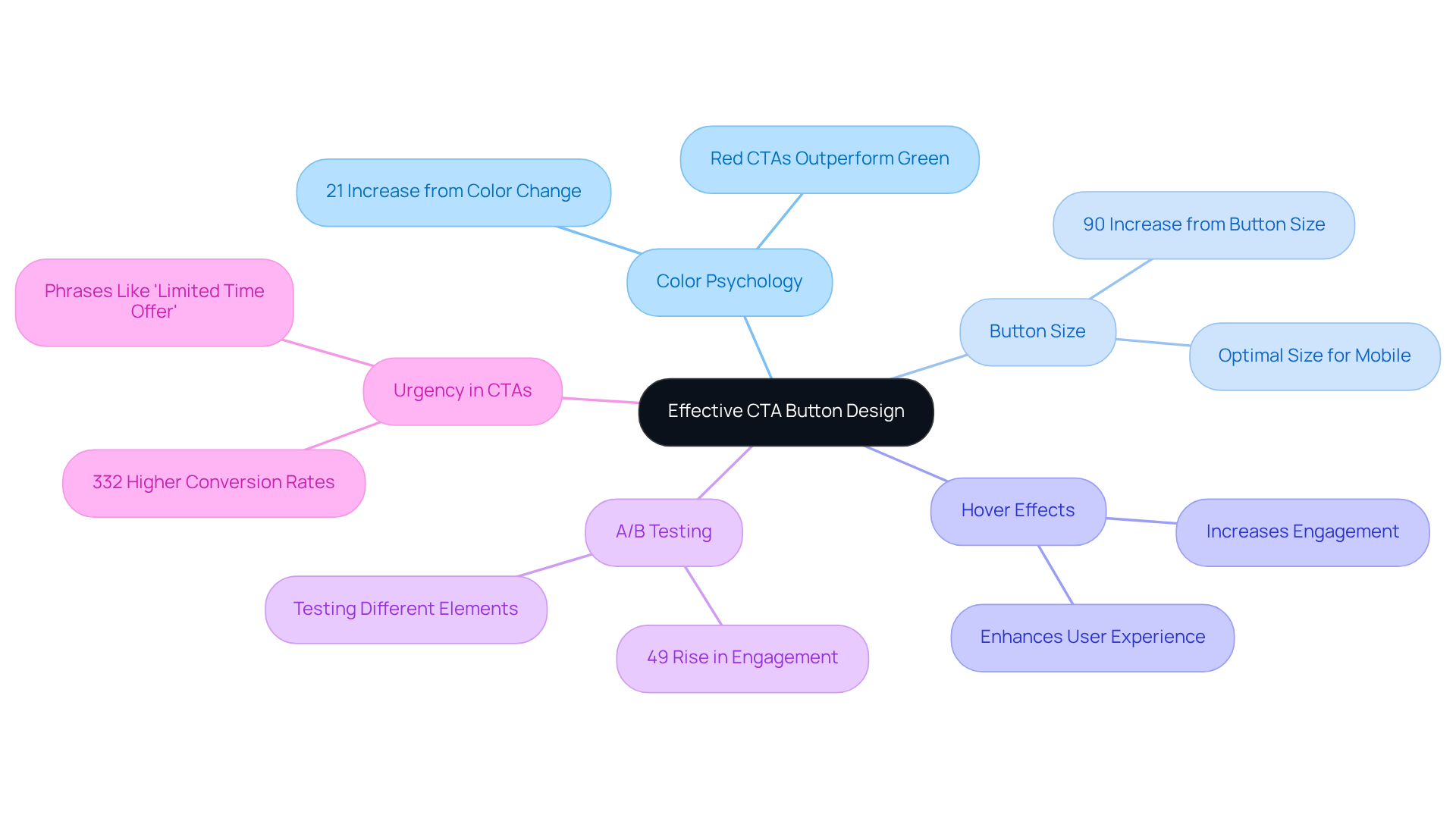
Contextual Links: Enhancing User Experience Through Relevant Navigation
In the fast-paced world of digital marketing, navigating through content can often feel overwhelming. Many tech startup founders face the challenge of ensuring that their audience remains engaged while exploring their offerings. This is where the importance of contextual links comes into play. By strategically linking to related articles, products, or services, brands can guide individuals through their digital journey, significantly enhancing engagement. At RNO1, we recognize that effective contextual links can reduce bounce rates and increase the time spent on site, especially considering that the median bounce rate across industries is 60.78%.
Imagine the frustration of a potential customer who clicks away from your site simply because they couldn't find what they were looking for. This scenario is all too common, but it doesn’t have to be the case. To truly enhance the effectiveness of contextual links, they should be relevant, distinctly labeled, and thoughtfully placed where individuals are most inclined to engage with them. This not only adds value to their experience but also increases the likelihood of conversion.
Prominent names, including RNO1, have successfully utilized contextual links to boost site engagement, illustrating that intentional navigation can lead to greater visitor satisfaction and retention. Digital marketing specialists emphasize that improving navigation through contextual links is vital for creating a seamless experience, ultimately resulting in better outcomes for brands. For tech startup founders, it is essential to ensure that important information is never more than two clicks away. By adhering to this principle, you can significantly improve navigation and engagement, aligning with RNO1's commitment to delivering measurable success through collaborative strategies. Together, we can create a that supports your journey and fosters growth.
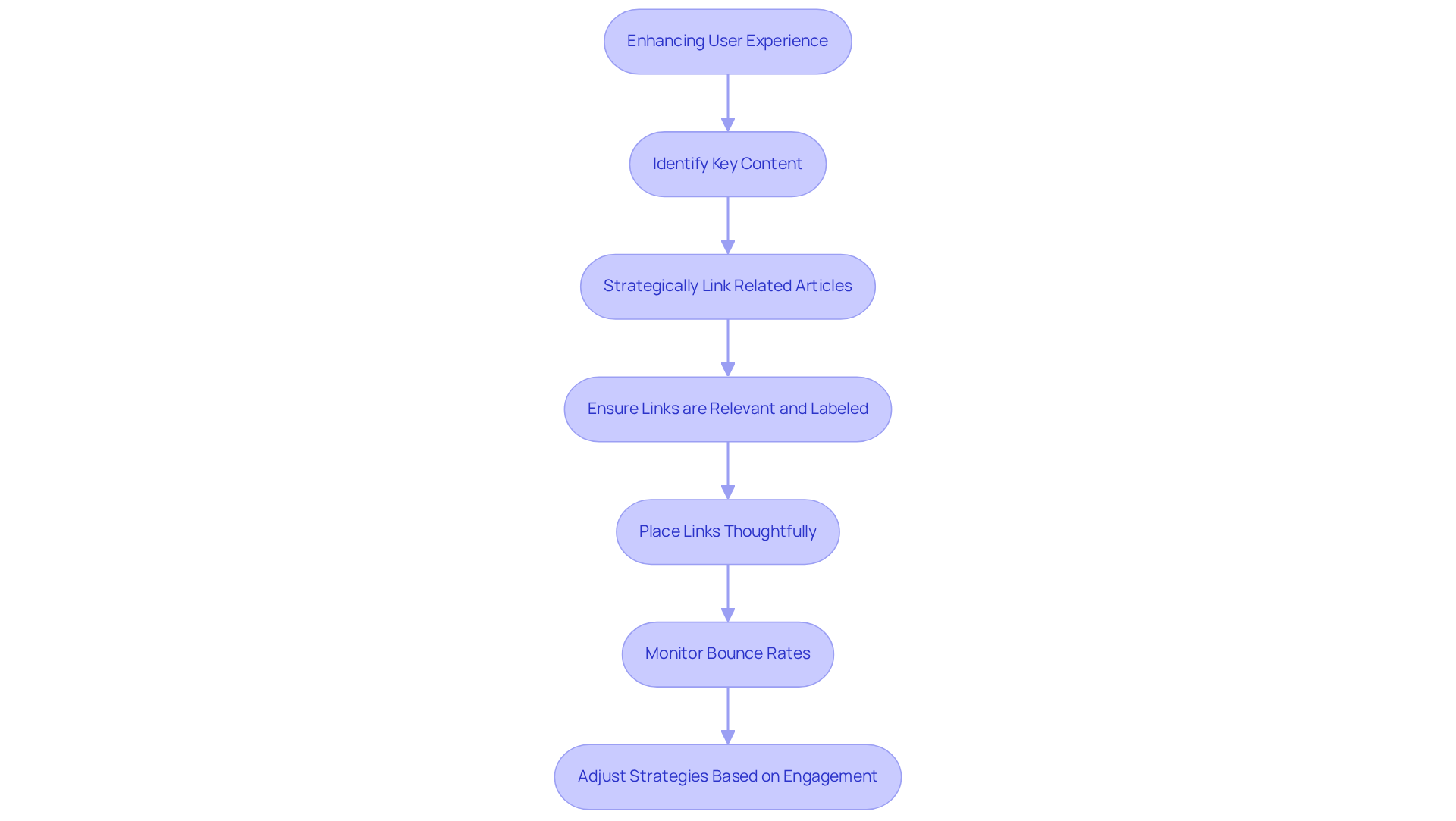
Banner and Video Ads: Captivating Audiences with Visual Calls to Action
In today's fast-paced digital world, many tech startup founders struggle to capture their audience's attention amidst the noise of countless advertisements. This can lead to frustration and missed opportunities. To address this challenge, it's essential to consider the impact of banner and . These tools can be incredibly effective when they incorporate calls to action examples that feature bold visuals and concise messaging, clearly communicating the desired action. Imagine how much more engaging your ads could be if they incorporated animations or interactive elements—these enhancements can make individuals more likely to click through and engage with your brand.
Moreover, think about where you place these ads. Strategically positioning them on high-traffic pages can significantly increase visibility and conversion rates, turning potential interest into actionable results. By understanding these strategies and utilizing calls to action examples, you can transform your advertising approach, ensuring that your efforts resonate with your audience. Remember, you’re not alone in this journey; many founders face similar hurdles, and together, we can navigate these challenges to achieve success.

Pop-Up CTAs: Balancing Engagement and User Experience
Pop-up CTAs can be powerful allies in capturing attention, especially when they are thoughtfully timed or triggered by specific actions. Yet, it’s important to recognize that their effectiveness can wane if overused or poorly designed, which can lead to frustration among users. This is a challenge many face, but there is a way to navigate it. By ensuring that pop-ups are relevant and offer real value—like discounts or exclusive content—companies can create a more positive experience. Additionally, leveraging exit-intent technology allows brands to present pop-ups at pivotal moments, significantly increasing the chance of engagement while fostering a favorable overall experience.
In the context of RNO1's Ryde initiative, implementing temporary calls to action examples can serve as an innovative strategy to boost e-commerce engagement, particularly through influencer partnerships. To enhance pop-up design, it’s beneficial to:
- Keep messages concise
- Incorporate visually appealing elements
- Provide easy options for dismissal
This thoughtful approach not only improves user experience but also encourages meaningful interaction with the content. By prioritizing these strategies, companies can effectively harness calls to action examples like pop-up CTAs to drive engagement and nurture the growth of omnichannel ambassador programs, ultimately fostering a more connected and engaged community. Together, we can create experiences that resonate and support the journey of every .

Slide-Ins and Carousel Ads: Engaging Users with Interactive CTAs
In the fast-paced world of tech startups, engaging your audience can feel overwhelming. Slide-ins and carousel ads have emerged as innovative calls to action examples in CTA strategies, allowing brands to share multiple messages or offers within a single interactive space. These elements invite exploration, enhancing engagement without adding pressure. However, many founders struggle to capture attention effectively, and it’s crucial to understand that carousel ads can drive up to 10 times more traffic to advertisers' websites than static sponsored posts. This statistic underscores their potential to transform your outreach efforts.
To truly harness this potential, it’s essential that your are not only visually appealing but also easy to navigate and strategically timed. When these elements align, they resonate more deeply with your audience, making them more receptive to your message. As Jared Schwitzke insightfully noted, RNO1's design-first mindset has revolutionized branding strategies, highlighting the significance of thoughtful design in nurturing meaningful interactions with content. This approach doesn’t just capture attention; it fosters a deeper connection, driving higher engagement metrics.
For tech startups like Founder's Haven, which RNO1 has rebranded to empower modern founders for digital success, this design-driven strategy can be particularly beneficial. By leveraging RNO1's performance marketing expertise, you can enhance client experiences and boost conversion rates using effective calls to action examples. Remember, you’re not alone in this journey; RNO1 is here to support you in navigating the complexities of digital engagement, ensuring that your brand can thrive in an increasingly competitive landscape.

Urgency in CTAs: Driving Immediate Action with Time-Sensitive Messaging
In the fast-paced world of digital marketing, urgency can often feel like a double-edged sword. While it serves as a powerful motivator that drives audience engagement, it can also create pressure that feels overwhelming. Many brands grapple with how to effectively use time-sensitive messaging in their calls to action examples without alienating their audience.
When phrases like 'Limited Time Only' and 'Act Now' are used thoughtfully as , they can instill a sense of urgency that encourages individuals to take action—be it making a purchase, subscribing to a newsletter, or seizing a limited-time offer. Research indicates that urgency can boost response rates by as much as 332%, and a single CTA in an email can increase clicks by 371%. This illustrates how vital urgency is for marketers seeking to connect with their audience.
However, it’s essential to approach this strategy with care. Authenticity is key; overusing urgency can lead to skepticism, which diminishes its effectiveness. For example, a message like 'Sign Up Today and Save 20%' is one of the calls to action examples that conveys urgency while also offering a clear incentive for immediate action.
As marketing tech expert Krunal Vaghasiya points out, incorporating words like 'Now' or 'Limited Time Offer' can further encourage prompt responses. Additionally, positioning calls to action above the fold can significantly enhance visibility, with research showing that CTAs in this prime location outperform those below by 304%.
By leveraging time-sensitive messaging thoughtfully, brands can foster genuine connections, transforming individual behavior and leading to increased conversions and a more engaged audience. We understand the challenges you face, and we’re here to help you navigate these strategies with empathy and expertise.
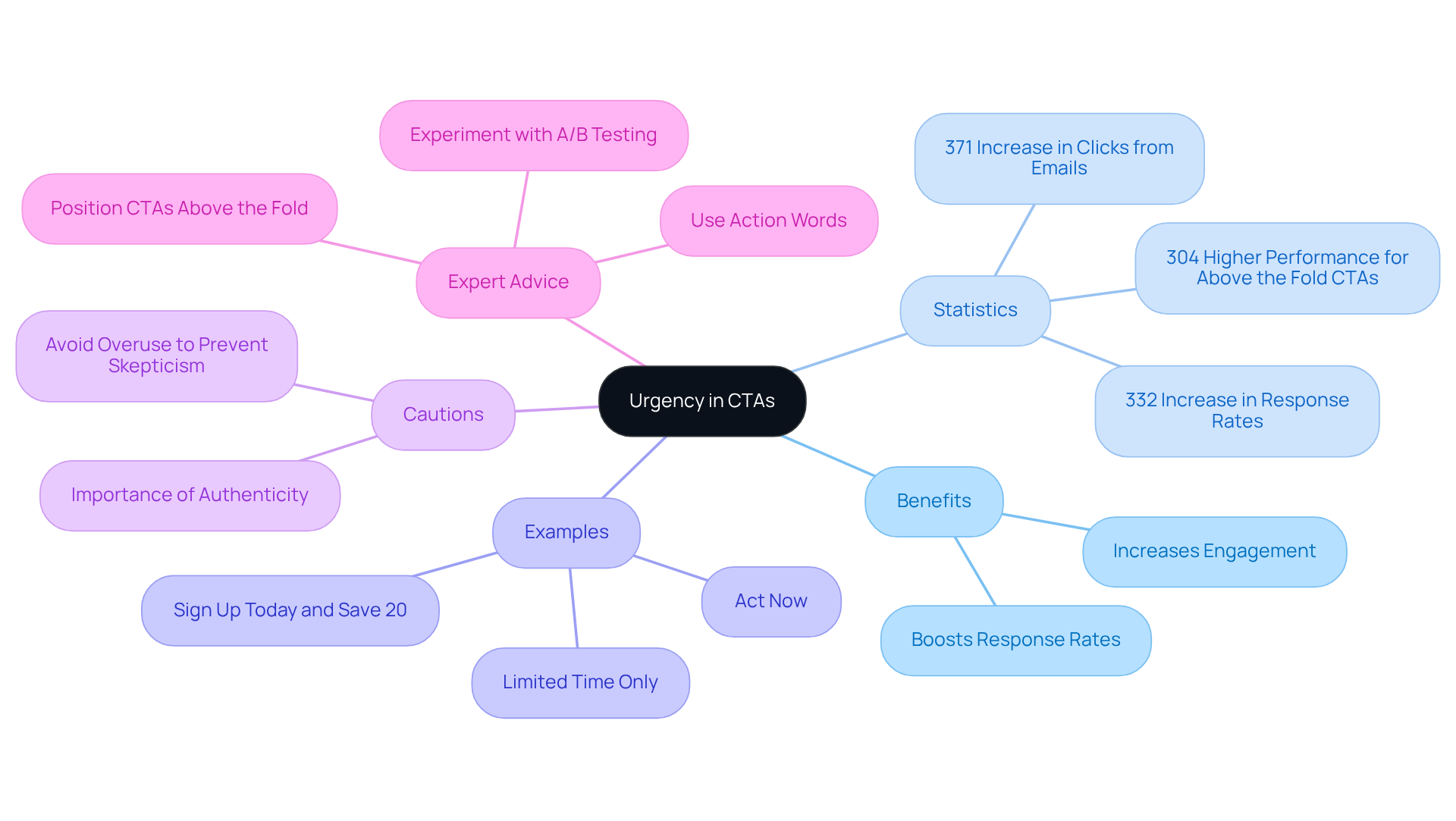
Audience-Centric CTAs: Aligning Calls to Action with User Objectives
Creating calls to action examples that are audience-focused can often feel overwhelming for tech startup founders. Many struggle to truly understand the needs and goals of their audience, which can lead to missed opportunities for engagement. This challenge becomes even more pronounced when considering the diverse motivations that drive individuals. When brands can recognize what truly inspires their target audience, they can craft calls to action examples that resonate deeply with their interests and aspirations.
Imagine a tech startup that implements different calls to action for new visitors versus returning customers. This thoughtful distinction not only ensures that each prompt is relevant but also compelling. As Neil Patel wisely points out, emotional involvement is crucial for motivating individuals to take action. This highlights the importance of personalization in crafting successful marketing strategies.
Moreover, as Kristopher Jones emphasizes, excellent content remains a cornerstone of effective SEO. This necessity underscores the need for calls to action examples that not only capture attention but also provide valuable insights. By aligning CTAs with audience goals and integrating quality content, companies can significantly enhance engagement and success rates.
Ultimately, by embracing a , tech startup founders can create a more meaningful connection with their audience, fostering a sense of community and support that drives success.
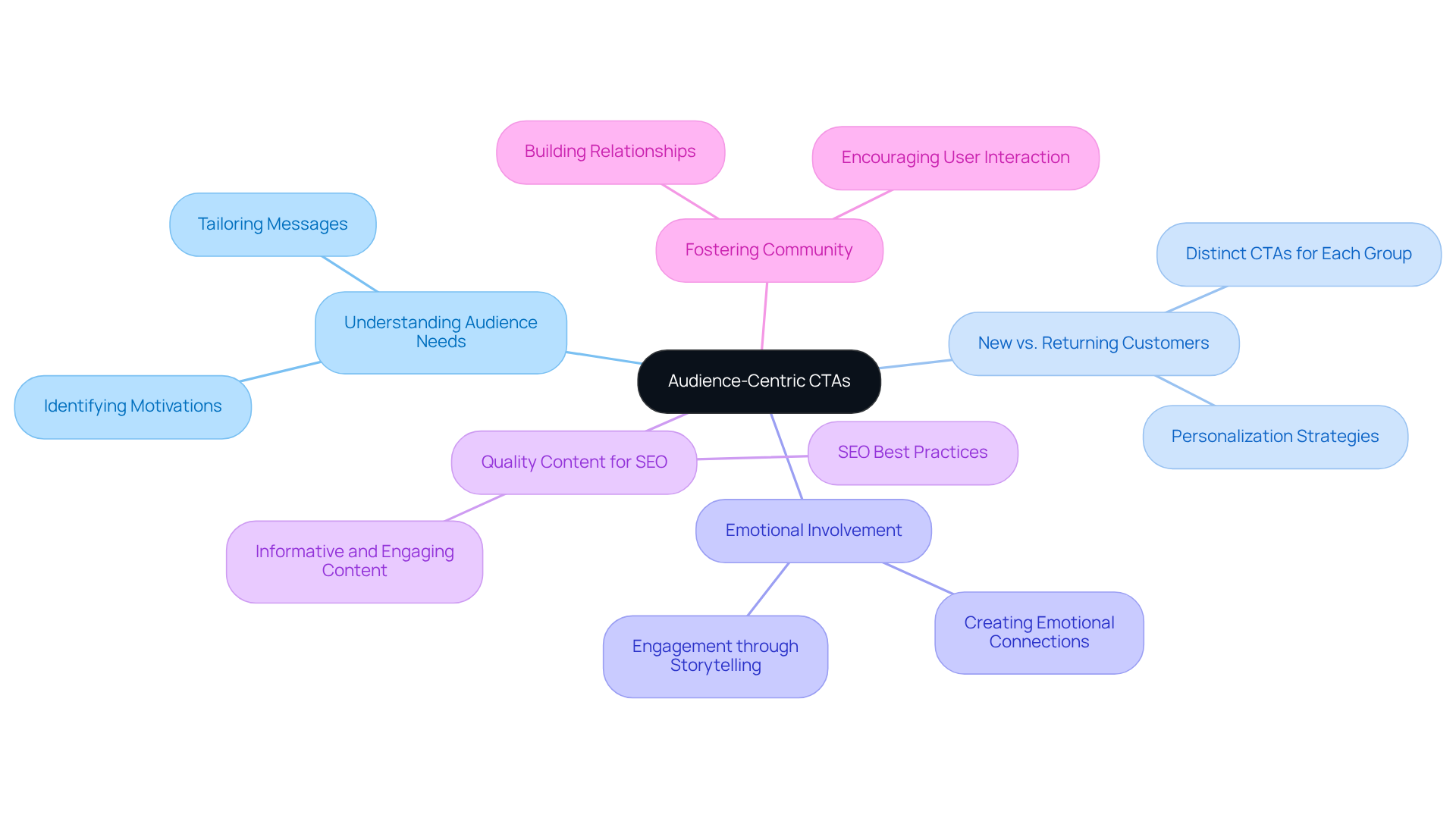
Best Practices for Crafting Effective Calls to Action: Key Strategies for Success
For brands, creating compelling calls to action examples can often feel overwhelming. It’s a common struggle to find the right words that not only capture attention but also inspire action. This challenge can lead to and diminished engagement. However, there are nurturing strategies that can guide you toward success.
First, consider the language you use. Clear, action-focused phrases that are effective calls to action examples can significantly enhance your results. In fact, using the word 'now' in your CTA can lead to a staggering 90% boost in conversions.
Next, think about visibility. Making your calls to action visually distinct and easy to identify on the page is crucial. Centered CTAs can receive up to 682% more clicks than those aligned to the sides, and larger buttons can increase click-through rates by about 90%.
It's also essential to embrace experimentation when creating calls to action examples. A/B testing different placements and designs can reveal what resonates best with your audience. For instance, CTAs positioned above the fold perform 304% better than those placed lower. Sometimes, simplifying your layout by eliminating navigation menus can double your success rates.
Additionally, consistency in A/B testing is key to generating effective calls to action examples. Tailoring your calls to action based on audience behavior can lead to a remarkable 202% improvement in conversion rates compared to standard approaches.
Finally, take the time to analyze performance metrics. This will help you identify areas for improvement, allowing you to leverage insights from your testing to enhance overall effectiveness. Incorporating interactive elements can also yield twice the results compared to traditional calls to action.
By embracing these nurturing methods and implementing calls to action examples, you can enhance participant involvement and stimulate transactions, creating a more engaged community around your brand.
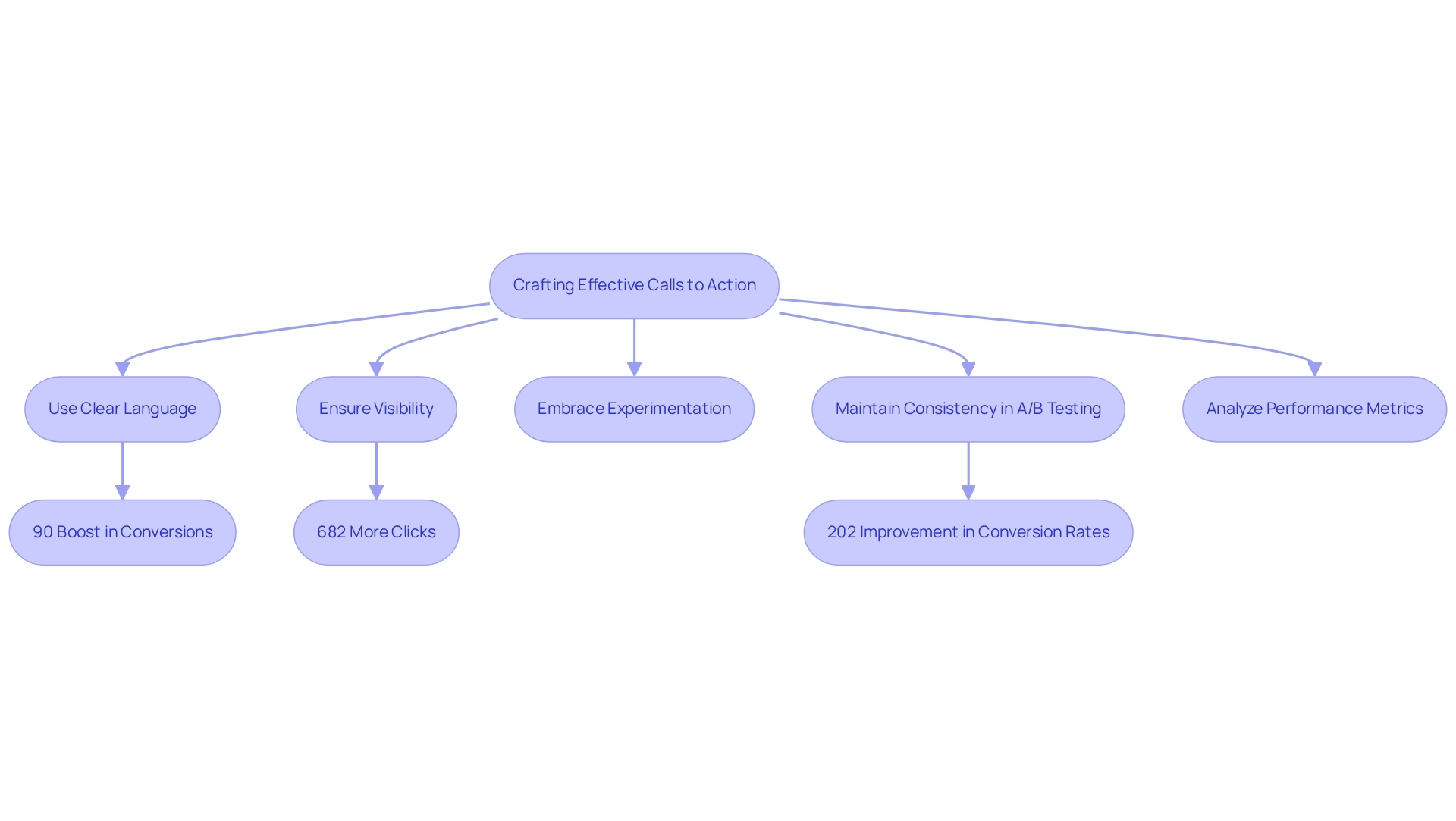
Measuring CTA Success: Strategies for Testing and Optimization
For companies, assessing the success of calls to action examples can often feel overwhelming. It's crucial to focus on key performance indicators like click-through rates, conversion rates, and engagement metrics. By using tools such as Google Analytics, businesses can gain a deeper understanding of how users interact with their calls to action, leading to valuable insights. For instance, it’s been found that straightforward and succinct calls to action in social media advertisements lead to a remarkable 285% increase in click-through rates compared to those that are vague. This stark difference highlights the need for clarity in messaging.
Moreover, consider the average conversion rate of landing page calls to action, which stands at 2.35%. This statistic underscores the importance of to enhance user engagement. Collecting qualitative insights through participant surveys can further illuminate how audiences perceive and respond to calls to action, empowering companies to refine their strategies effectively. It's fascinating to note that emails featuring a single call to action can boost sales clicks by an astounding 1617%. This statistic serves as a powerful reminder of the effectiveness of focused messaging.
By analyzing this data, brands can uncover trends and optimize their calls to action examples, ultimately improving their digital marketing effectiveness. This data-driven approach not only fosters greater engagement but also aligns with the evolving expectations of users who seek personalized and dynamic online experiences. As we navigate this landscape together, remember that each step taken towards understanding your audience can significantly enhance your impact.
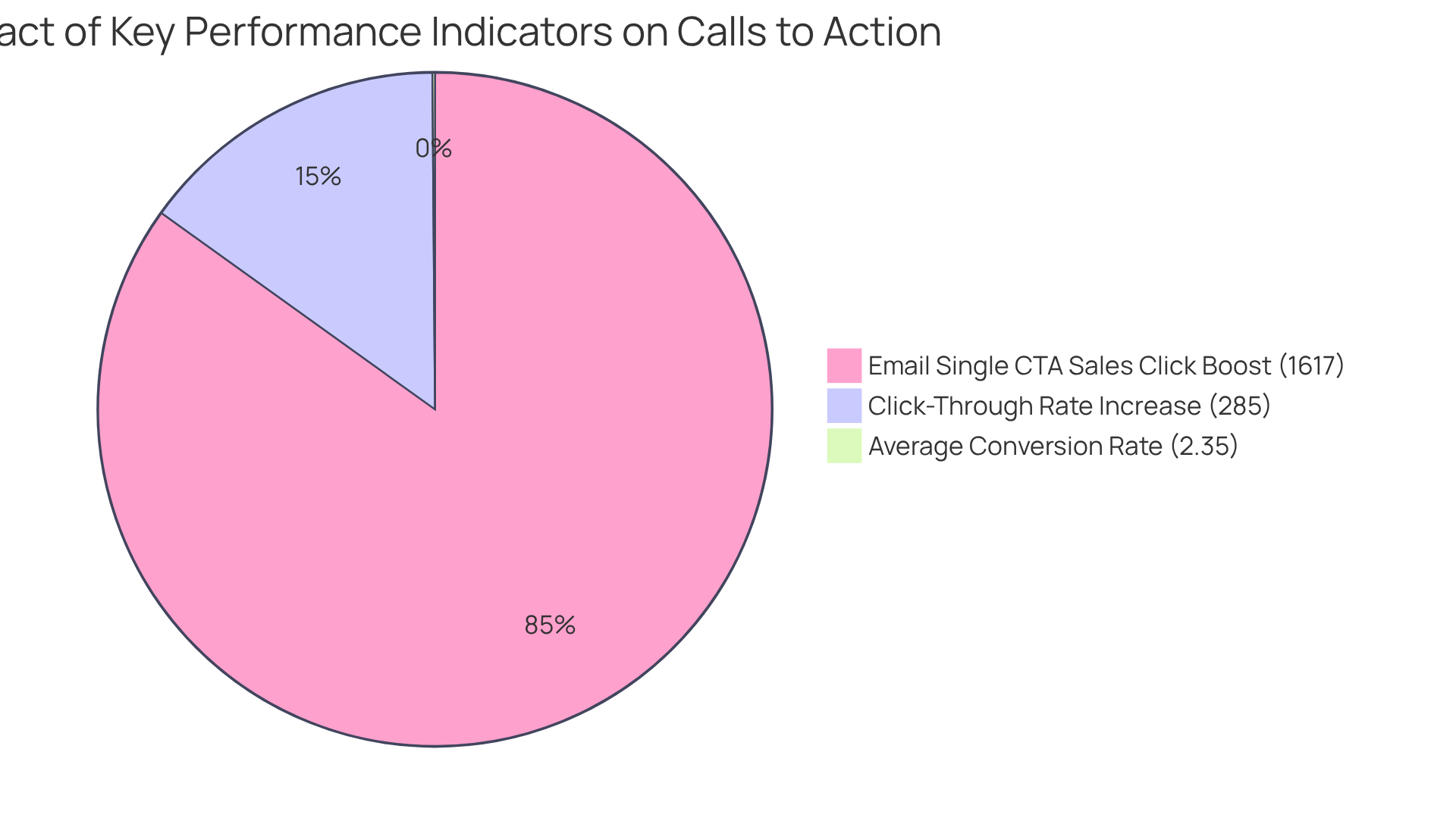
Conclusion
Incorporating effective calls to action examples is crucial for brands aiming to enhance user engagement and drive conversions. Many brands struggle to connect with their audiences, leading to missed opportunities for meaningful interactions. This challenge can feel overwhelming, but the strategies discussed throughout this article illustrate how thoughtful design, personalization, and urgency can transform these interactions into something impactful. By understanding the significance of these elements, brands can create compelling prompts that not only capture attention but also inspire meaningful actions.
Key insights reveal the profound impact of optimized button designs, contextual links, and the strategic use of urgency in CTAs. Imagine maximizing click-through rates with visually distinct buttons or enhancing navigation through relevant links; each tactic contributes to a more engaging user experience. It's important to remember that aligning calls to action with audience objectives fosters a deeper connection and encourages ongoing engagement, ultimately nurturing relationships that matter.
Ultimately, the journey toward crafting effective calls to action is an ongoing process of testing and refinement. By leveraging data-driven insights and embracing best practices, brands can continuously improve their engagement strategies. As the digital landscape evolves, staying attuned to user needs and preferences will be essential for fostering lasting connections and driving success. Embrace these strategies, share your experiences, and transform user engagement into a powerful tool for growth and conversion. You are not alone on this journey; together, we can create meaningful interactions that resonate with your audience.
Frequently Asked Questions
What are calls to action and why are they important in digital marketing?
Calls to action (CTAs) are prompts that encourage users to take specific actions, such as clicking a button or signing up for a newsletter. They are crucial in digital marketing as they drive engagement and conversions, helping brands connect meaningfully with their audience.
How does RNO1 enhance engagement through calls to action?
RNO1 crafts strategic calls to action that resonate with individuals by integrating them into branding and digital experiences. This approach ensures that each interaction is compelling and encourages users to take the next step in their journey with the brand.
What impact do personalized calls to action have on conversion rates?
Personalized calls to action convert 202% better than standard ones, and incorporating urgency signals can enhance results by up to 332%.
What design elements can improve the effectiveness of calls to action?
Optimizing button size and color can boost results by 21%, and positioning calls to action above the fold can perform 304% better compared to those placed below.
Why are mobile-optimized calls to action important in eCommerce?
With mobile devices accounting for 68% of total e-commerce traffic, mobile-optimized calls to action can improve success rates by 32.5%.
How can social proof influence engagement?
Pages that showcase social proof, such as testimonials, see an average success rate of 12.5%, indicating that these elements can guide prospects toward greater engagement.
What are the best practices for designing effective button CTAs?
Effective button CTAs should be visually distinct, use contrasting colors, and feature clear, action-oriented language. Additionally, optimizing button size for desktop and mobile, incorporating hover effects, and conducting A/B testing can enhance engagement and conversion rates.
What role do contextual links play in user experience?
Contextual links guide users through related articles, products, or services, enhancing engagement and reducing bounce rates. They should be relevant, distinctly labeled, and thoughtfully placed to add value and increase the likelihood of conversion.
How can tech startup founders improve navigation on their websites?
Tech startup founders should ensure that important information is never more than two clicks away, which significantly improves navigation and engagement, aligning with best practices for effective digital marketing.




